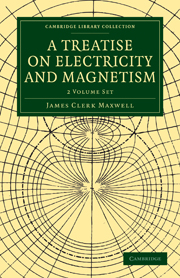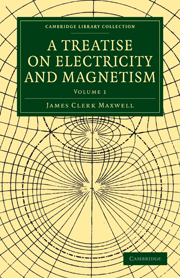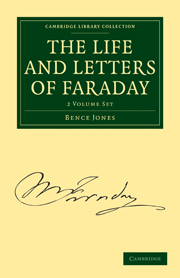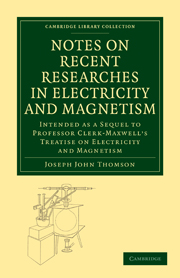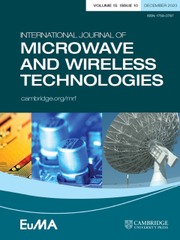A Treatise on Electricity and Magnetism 2 Volume Paperback Set
Arguably the most influential nineteenth-century scientist for twentieth-century physics, James Clerk Maxwell (1831–1879) demonstrated that electricity, magnetism and light are all manifestations of the same phenomenon: the electromagnetic field. A fellow of Trinity College Cambridge, Maxwell became, in 1871, the first Cavendish Professor of Physics at Cambridge. His famous equations - a set of four partial differential equations that relate the electric and magnetic fields to their sources, charge density and current density - first appeared in fully developed form in his 1873 Treatise on Electricity and Magnetism. This two-volume textbook brought together all the experimental and theoretical advances in the field of electricity and magnetism known at the time, and provided a methodical and graduated introduction to electromagnetic theory.
Product details
June 2010Multiple copy pack
9781108014052
962 pages
216 × 140 × 58 mm
1.32kg
Temporarily unavailable - available from TBC
Table of Contents
- Volume 1: Part I. Electrostatics:
- 1. Description of phenomena
- 2. Elementary mathematical theory of electricity
- 3. Systems of conductors
- 4. General theorems
- 5. Mechanical action between electrified bodies
- 6. Points and lines of equilibrium
- 7. Forms of equipotential surfaces and lines of flow
- 8. Simple cases of electrification
- 9. Spherical harmonics
- 10. Confocal surfaces of the second degree
- 11. Theory of electric images
- 12. Conjugate functions in two dimensions
- 13. Electrostatic instruments
- Part II. Electrokinematics:
- 1. The electric current
- 2. Conduction and resistance
- 3. Electromotive force between bodies in contact
- 4. Electrolysis
- 5. Electrolytic polarization
- 6. Mathematical theory of the distribution of electric currents
- 7. Conduction in three dimensions
- 8. Resistance and conductivity in three dimensions
- 9. Conduction through heterogeneous media
- 10. Conduction in dielectrics
- 11. Measurement of the electric resistance of conductors
- 12. Electric resistance of substances. Volume 2: Part III. Magnetism:
- 1. Elementary theory of magnetism
- 2. Magnetic force and magnetic induction
- 3. Particular forms of magnets
- 4. Induced magnetization
- 5. Magnetic problems
- 6. Weber's theory of magnetic induction
- 7. Magnetic measurements
- 8. Terrestrial magnetism
- Part IV. Electromagnetism:
- 1. Electromagnetic force
- 2. Mutual action of electric currents
- 3. Induction of electric currents
- 4. Induction of a current on itself
- 5. General equations of dynamics
- 6. Application of dynamics to electromagnetism
- 7. Electrokinetics
- 8. Exploration of the field by means of the secondary circuit
- 9. General equations
- 10. Dimensions of electric units
- 11. Energy and stress
- 12. Current-sheets
- 13. Parallel currents
- 14. Circular currents
- 15. Electromagnetic instruments
- 16. Electromagnetic observations
- 17. Electrical measurement of coefficients of induction
- 18. Determination of resistance in electromagnetic measure
- 19. Comparison of electrostatic with electromagnetic units
- 20. Electromagnetic theory of light
- 21. Magnetic action on light
- 22. Electric theory of magnetism
- 23. Theories of action at a distance
- Index.

